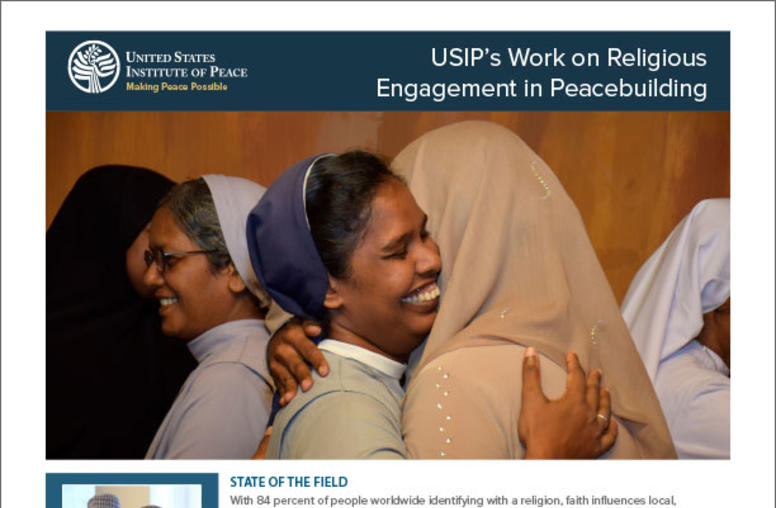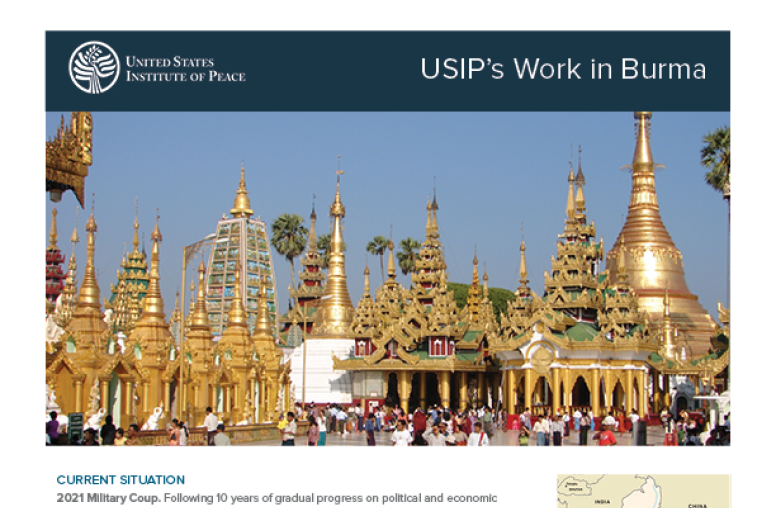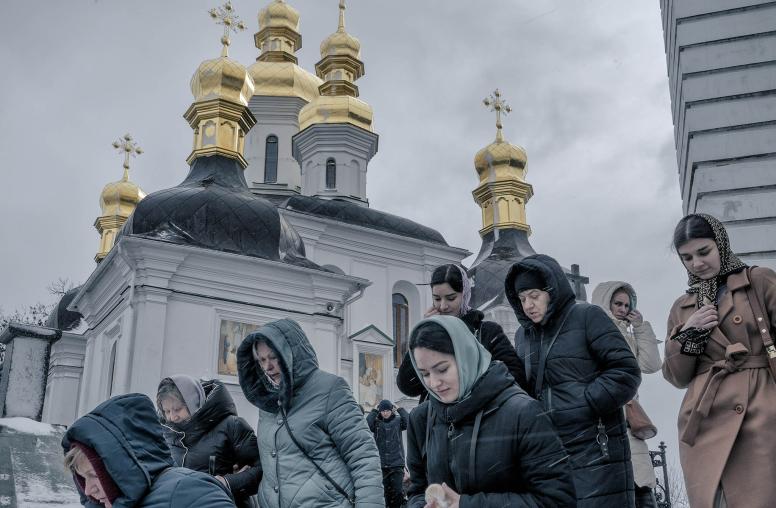Finding Common Ground on U.S. International Religious Freedom Policy
Overcoming partisan mistrust through a focus on bipartisan priorities.
On May 12, Secretary of State Antony Blinken issued the Biden administration’s first annual religious freedom report. It was accompanied by a strong speech, highlighting the importance of the issue and singling out countries such as Saudi Arabia, Iran, Russia and Nigeria, among others, for their particularly severe violations. The secretary also made a point to establish that the Biden administration’s approach emphasizes that the right to religious freedom is one component of an integrated human rights agenda. This stands in contrast to others who view religious freedom to be of unique importance and deserving of singular attention.

These differing approaches to international religious freedom (IRF) policy are not new. But given the recent tumultuous political landscape of the United States, it is essential to find ways to preserve the nonpartisan nature of international religious freedom promotion.
In response to this need, USIP launched a working group entitled “U.S. International Religious Freedom Policy: Finding Common Ground to Advance Peace and Stability” earlier this year. Comprised of former U.S. government officials, diplomats, academics, advocates and practitioners from across the American political spectrum, the group is united around a shared conviction that religious freedom is an important human right central to stability and peacebuilding in key strategic contexts around the world. The working group aims to strengthen nonpartisan approaches to implementing international religious freedom in U.S. foreign policy and creating new avenues to protect it from politicization. Initial discussions this spring have yielded important insights into the various challenges currently confronting U.S. international religious freedom policy.
Overcoming Partisan Distrust
While international religious freedom has never been fully divorced from the domestic political arena, the current partisan difference over domestic religious liberty risks entangling fights at home with efforts to promote religious freedom beyond America’s borders. While the “origin story” of U.S. IRF policy often emphasizes the issue’s strong bipartisan roots — such as the fact that the International Religious Freedom Act sailed virtually unopposed through Congress and was signed by President Bill Clinton — there are concerns that this narrative glosses over lingering and crucial differences over how we should understand the nature and scope of IRF.
More specifically, different interpretations of — and approaches to — IRF policy reflect longstanding biases on both the political right and the left. Those on the right contend that Democratic administrations rarely champion international religious freedom and argue that the intellectual left focuses disproportionately on criticizing the historical and cultural foundations of the policy with little concern for the real-world effects of religious persecution in specific communities. For its part, the left often perceives Republican IRF policy to be primarily concerned with protecting Christian communities abroad as well as using religious freedom as a vehicle for promoting conservative values in ways that potentially threaten women’s health and reproductive rights or create greater vulnerability for LGBTQ communities. These biases can manifest in mutual partisan fears of a “hidden agenda” behind the opposing sides’ IRF policy, leading to skepticism and distrust that exacerbates partisan tensions and creates consequential gaps between policy articulation and implementation.
However, the implementation of “bread and butter” IRF policy, such as the annual reporting mechanism and routine diplomatic engagement, varies little between different administrations and has consistently advocated for the right for all — indicating that partisan differences over IRF might not actually be as great as they may appear. In the current environment of intense political division and fear, the challenge we are actually facing may be one of unlearning a sense of “false polarization” that today seems to pervade every issue — potentially including IRF.
Religious Freedom: A Clear, Distinct Human Right
Conversely, the importance of recognizing religious freedom as a universal human right raises the question of whether positioning the issue under the broader umbrella of human rights could broaden support. After all, in order for religious freedom to be fully enjoyed, it relies on a host of other rights: freedom of assembly, freedom of speech, freedom of expression, freedom of movement, among others. The idea here is that clearly “nesting” IRF work within a broader human rights framework reflects this fact and may minimize the knee-jerk reaction that often occurs when religious freedom appears to be singled out. Doing so may enable IRF policy to connect with other efforts focused on protecting victimized groups who experience insecurity and discrimination — such as ethnic minorities and LGBTQ communities — and thereby creating “coalitions of the vulnerable.”
But as every action has an equal and opposite reaction, adopting this approach could make IRF a less distinctive focal point for attention and advocacy. Congress originally passed the International Religious Freedom Act in 1998 because of how diplomats routinely ignored the topic or buried it at the bottom of a long list of issues, which did not reflect its unique role in the founding of our republic. Additionally, the potential absorption of IRF into the broader human rights portfolio runs the risk of lowering its profile as a policy priority amid increasingly dire global trends. In recent years, IRF advocates — particularly those on the right — have pushed for greater bureaucratic autonomy and an elevation in the status of the State Department ambassador-at-large for IRF.
Reframing or rebranding the issue through a values-based lens of human dignity, or through an appeal to IRF’s utility for advancing clearly bipartisan priorities such as peace and security, might form the basis of a common approach likely to appeal to both parties.
Issues of persecution based on religion or belief will continue to be an important human rights concern that the United States should address. And any effort toward bipartisanship means balancing the need to speak to broader and more universal agendas and values while continuing to maintain robust IRF promotion as a distinct diplomatic undertaking. Consequentially, the working group will continue to explore these tensions and potential opportunities.
Emily Scolaro is a research assistant for the Religion and Inclusive Societies program at the U.S. Institute of Peace.



